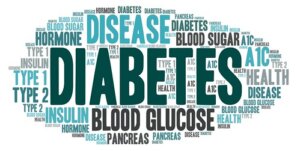By: EpicTop10.com
Diabetes is an extremely common disease that affects millions of people worldwide. With diabetes being so common, it is eye-opening to see how often people receive incorrect information about not only treatment, but also how it can occur within a body. A big reason for this frequent miscommunication is due to how it is represented within the media which can include other blogs, videos, movies, and television shows. When patients receive a diagnosis or simply want their questions answered, where is the first place they turn to? Without hesitation, many proceed straight to the internet which has aided in the issues regarding diabetes misrepresentation in the media. We will focus on debunking some of the many myths about diabetes while hopefully creating a clearer picture about the many facets of this disease. Let’s take a look at some myths first…
Myths
Review these videos below and reflect on what you may think is displayed incorrectly (do not worry if you are unsure, we will go over them).
We know that no one ever wants to disagree with Hannah Montana, but unfortunately, this form of diabetes described is not accurate. In the first video, type 2 diabetes is properly represented, but when the actor describes that he must take an injection every few hours or else he dies is false. The injection that he is referring to is insulin and it is only needed prior to meals after obtaining an accurate blood glucose reading that indicates their blood sugar is elevated. The second video is describing type 1 diabetes, which people are born with, as type 2 diabetes, the more familiar one that is associated with unhealthy eating habits. After the initial wrongful depiction of diabetes, Oliver gives an education lesson about his type 1 diabetes and how he can consume sugar if his blood sugar is too low. Though a cupcake is not the healthiest option, it is still depicted correctly.
Other common myths include:
- You cannot have any sugar anymore: many nutritious foods needed for a complete diet contain small amounts of sugar.
- Medications can cure diabetes: medications help to maintain blood sugar levels but will not cure it.
- Reducing alcohol consumption to zero: Moderation and limitations must be applied when it comes to drinking alcohol.
- “Sugar-free” desserts are a safer option: often contain products that can affect the body in different ways that still raises blood sugar levels.
Now let’s look at some facts about diabetes…
Facts
It is very easy to get lost in deciphering between what is true and false regarding diabetes, so let’s review some of the facts. There are two different types of diabetes: type 1 and type 2. A person is often born with type 1 diabetes, and it is caused by a deficiency that causes the body to attack itself, this often results in low blood sugar levels. Type 2 diabetes is acquired through poor habit which can include, but is not limited to: poor nutrition, lack of exercise, or an inactive lifestyle.
Nutrition is the number one way to correct and maintain a healthy lifestyle when living with diabetes. A quick guide on the exact amount of what to eat can be referenced through MyPlate.com which shows the necessary categories needed daily.
Do not forget to keep moving! Exercise and staying active is a great tool to keeping your blood sugars low.
Your blood sugar refers to the concentration of sugar that is present in your blood at a certain time. It is crucial that this is maintained with diabetes. There are many complications that can occur if it is uncontrolled. Some of these include vision loss, loss of feeling in your feet, and even amputation of toes.
Overall, being diagnosed with diabetes can seem scary and often a “death-sentence” but that is far from the truth. With proper diet and management, these complications can be prevented and sometimes correct their diabetes all together. Coming from a family that has dealt with diabetes for generations, it is crucial to follow these guidelines, and for those assisting with relative/ friends in their journey, your support is crucial.
References
Caple, C., Morales, N., Constantine, L., & Hanson, D. (2023). Educating About Type 2 Diabetes Mellitus in Adults. Educating About Type 2 Diabetes Mellitus in Adults By: Caple C, Morales N, Constantine L, Hanson D, CINAHL Nursing Guide, September 8, 2023.
Carser, A. R. (2021). Handling diabetes. Essential Library, an imprint of Abdo Publishing.
Hicks, C. W., & Selvin, E. (2019). Epidemiology of peripheral neuropathy and lower extremity disease in diabetes. Current Diabetes Reports, 19(10). https://doi.org/10.1007/s11892-019-1212-8
Teymourian, H., Barfidokht, A., & Wang, J. (2020). Electrochemical glucose sensors in diabetes management: An updated review (2010–2020). Chemical Society Reviews, 49(21), 7671–7709. https://doi.org/10.1039/d0cs00304b

